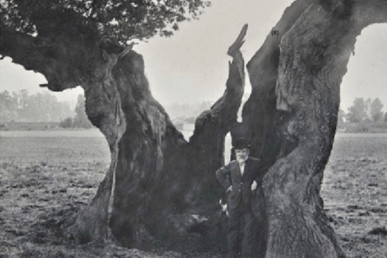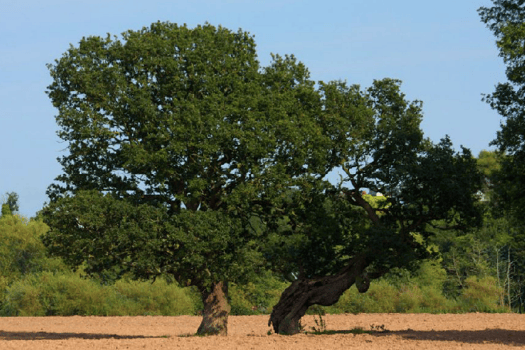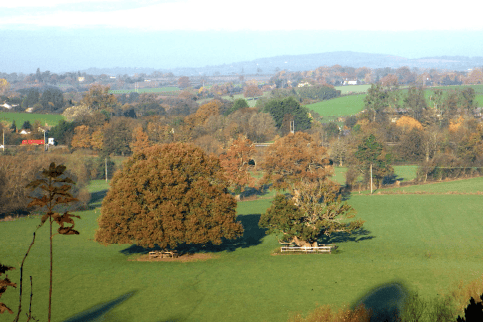A HISTORIC oak tree in Ross-on-Wye, known as the "Old Oak of Ross," is deteriorating, raising concerns among local tree experts.
Jerry Ross, a member of the Herefordshire Tree Forum, has been observing the tree’s condition and suggests that recent declines may be linked to pollution in the nearby River Wye.
Often referred to as the "Domesday Oak," this tree, estimated to be as old as 850 years, has withstood numerous natural and human threats over its long history, potentially dating back to the 12th century.
In 1854, the oak suffered a fire that reduced it to a hollow trunk, leaving only two living sections that survived. These fragments have since been reinforced with wooden props and iron supports, enabling the tree to continue growing despite its fragile structure.

In recent years, however, the tree has exhibited thinning foliage and dieback, with its healthiest section now visibly weakened. Mr Ross notes that this decline has become more pronounced over the past decade, coinciding with a decrease in the River Wye’s water quality.
He explained: “Flooding alone is unlikely to be the cause, as this area has flooded for centuries without impacting the tree’s health. But pollutants in the river, especially phosphates and nitrates, have been rising. These chemicals can damage the soil’s mycorrhizal fungi, which trees depend on for nutrient uptake. This tree, having survived for so long, likely relies heavily on these networks."
Additionally, nutrient uptake issues and changes in agricultural practices may be contributing factors, leaving the tree more vulnerable to stress and disease. While photos from 2012 show the oak thriving, more recent images reveal reduced leaf cover and ongoing decline.

As the health of the tree declines, its significance to the community is becoming more apparent. The Old Oak has long been a focal point for the Ross-on-Wye community, offering a picturesque backdrop for gatherings and celebrations. Its significance extends beyond natural beauty; it serves as a living monument to the area’s rich history and cultural heritage. Local schools often include the tree in educational outings, teaching children about the environment and the importance of conservation.
The impact of water quality on tree health is becoming a growing concern among local conservationists, who fear that other historic trees may be at risk if pollution levels continue to rise. The Wye, once known for its biodiversity, has experienced a decline in white water crowfoot and other native flora, alongside reports of algal blooms and reduced aquatic life.
This decline in river health has prompted renewed discussions on local environmental policies, with calls for more robust measures to manage agricultural runoff and improve water quality. Conservationists argue that such actions are essential not only to protect local wildlife but also to safeguard the future of historical trees and plants that rely on stable ecosystems.
The oak, once a celebrated symbol of endurance in Ross-on-Wye, may now be succumbing after centuries of resilience. Residents who view the tree from The Prospect Gardens have long admired its beauty and the historical connection it offers.

As the situation evolves, conservationists are advocating for greater attention to the environmental factors affecting ancient trees in the area. This highlights the significant impact of water quality and soil health on these landmarks, raising important questions about conservation efforts moving forward.
With community engagement and local advocacy, there is hope that protective measures can be implemented to preserve the Old Oak of Ross, ensuring it remains a cherished part of the landscape and a vital link to the area’s heritage for generations to come.
Community involvement is vital to the future of the Old Oak and similar historic trees in the region.




Comments
This article has no comments yet. Be the first to leave a comment.